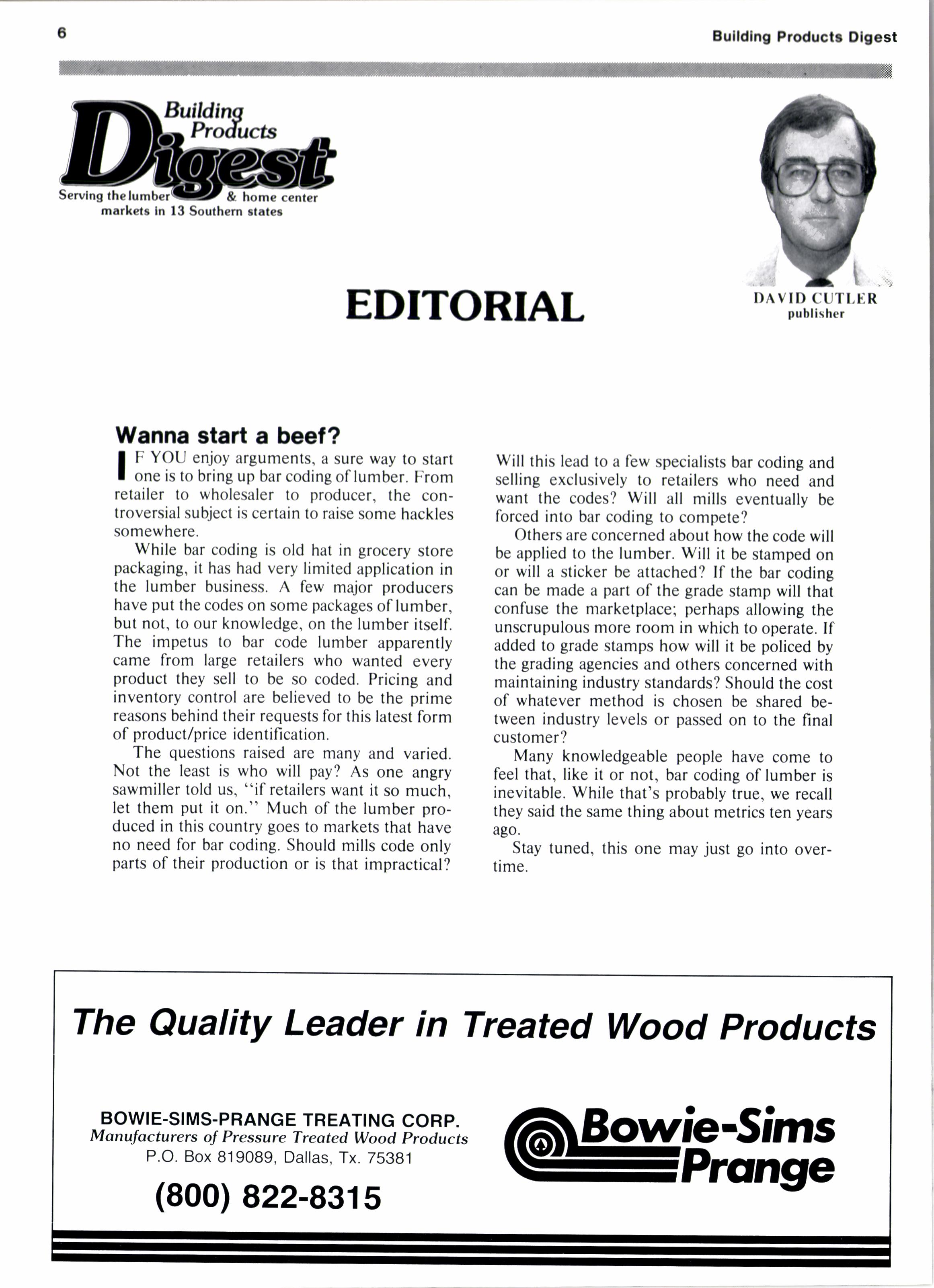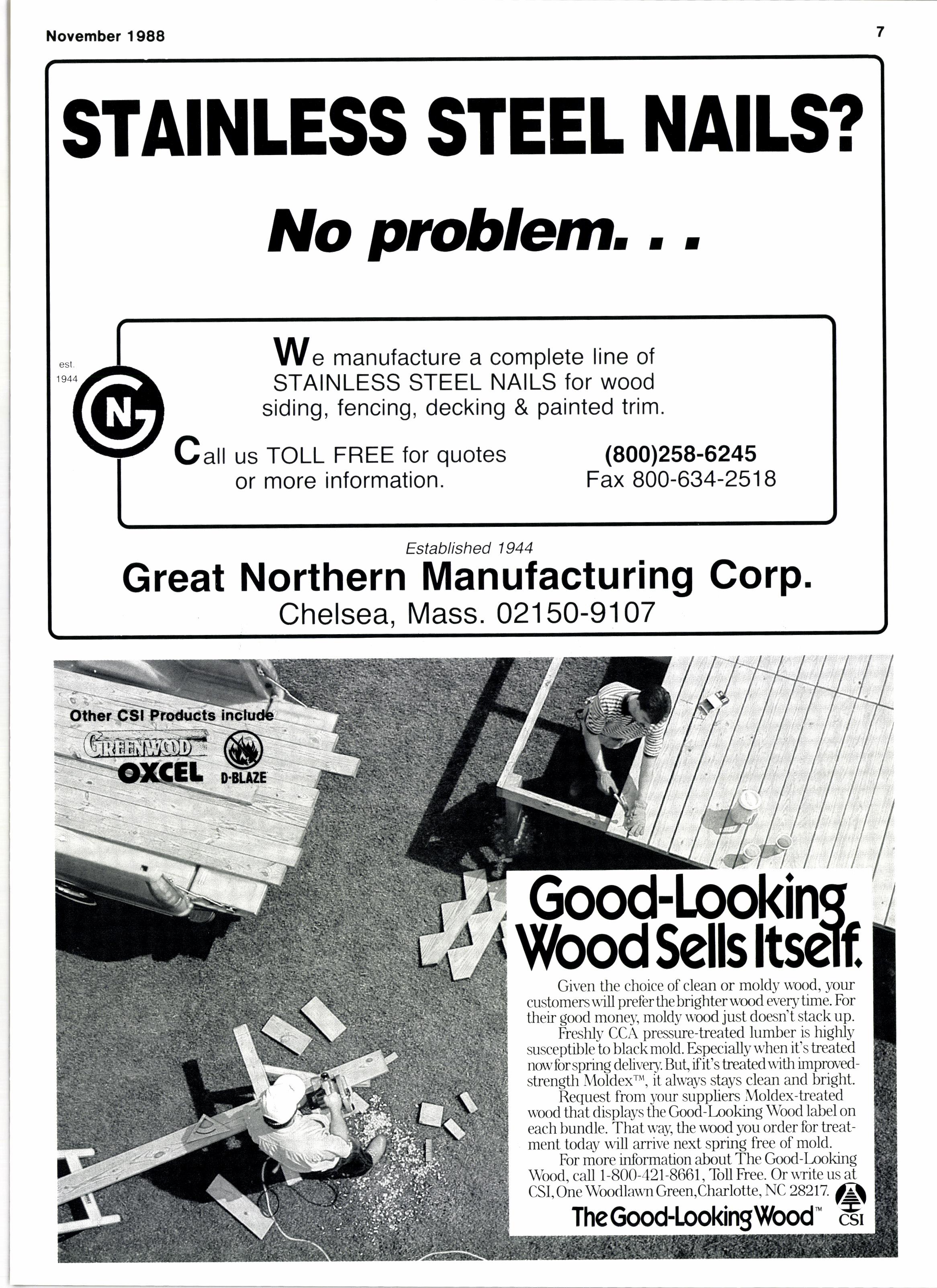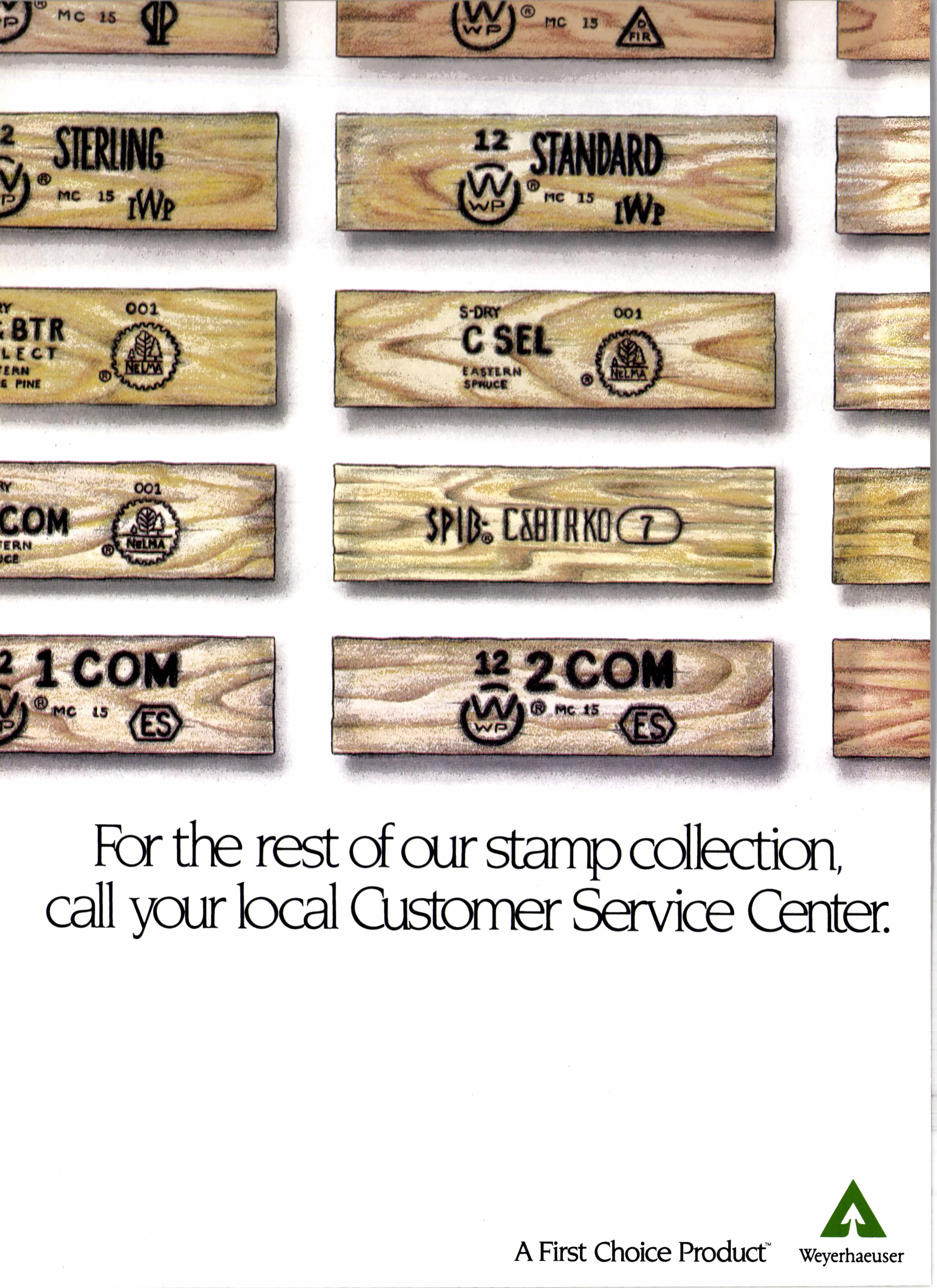
1 minute read
EDITORIAL
DAVID CUTI,IR publisher
Wanna start a beef?
I F YOU enjoy arguments, a sure way to start I one is to bring up bar coding of lumber. From retailer to wholesaler to producer, the controversial subject is certain to raise some hackles somewhere.
While bar coding is old hat in grocery store packaging, it has had very limited application in the lumber business. A few major producers have put the codes on some packages of lumber, but not, to our knowledge, on the lumber itself. The impetus to bar code lumber apparently came from large retailers who wanted every product they sell to be so coded. Pricing and inventory control are believed to be the prime reasons behind their requests for this latest form of product/price identifi cation.
The questions raised are many and varied. Not the least is who will pay? As one angry sawmiller told us, "if retailers want it so much, let them put it on." Much of the lumber produced in this country goes to markets that have no need for bar coding. Should mills code only parts of their production or is that impractical?
Will this lead to a few specialists bar coding and selling exclusively to retailers who need and want the codes? Will all mills eventually be forced into bar coding to compete?
Others are concerned about how the code will be applied to the lumber. Will it be stamped on or will a sticker be attached? If the bar coding can be made a part of the grade stamp will that confuse the marketplace; perhaps allowing the unscrupulous more room in which to operate. If added to grade stamps how will it be policed by the grading agencies and others concerned with maintaining industry standards? Should the cost of whatever method is chosen be shared between industry levels or passed on to the final customer?
Many knowledgeable people have come to feel that, like it or not, bar coding of lumber is inevitable. While that's probably true, we recall they said the same thing about metrics ten years ago.
Stay tuned, this one may just go into overtime.












